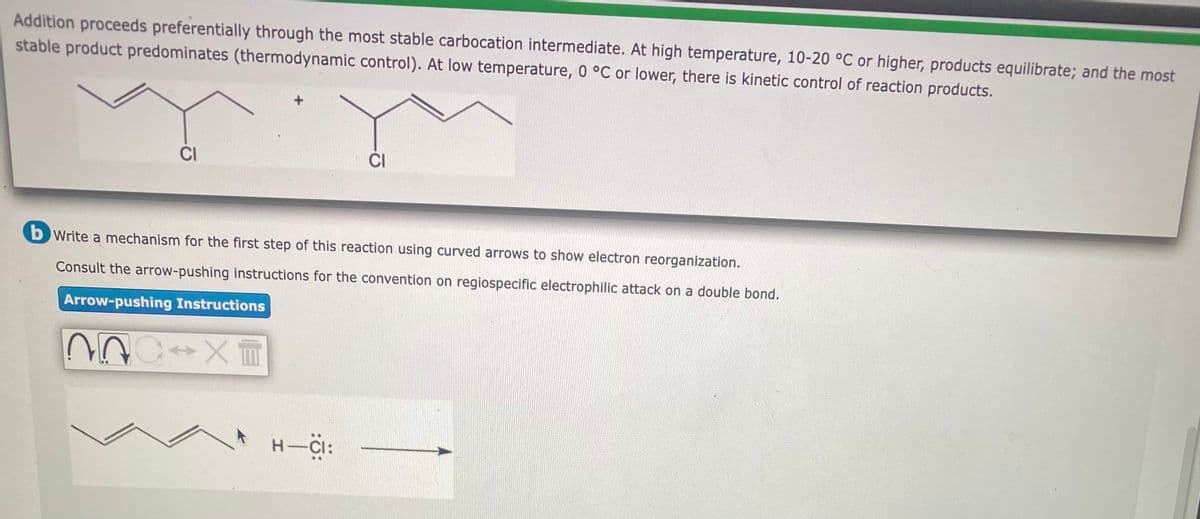Addition proceeds preferentially through the most stable carbocation intermediate. At high temperature, 10-20 °C or higher, products equilibrate; and the most stable product predominates (thermodynamic control). At low temperature, 0 °C or lower, there is kinetic control of reaction products. Write a mechanism for the first step of this reaction using curved arrows to show electron reorganization. Consult the arrow-pushing instructions for the convention on regiospecific electrophilic attack on a double bond. Arrow-pushing Instructions XE H-CI:
Reactions of Ethers
Ethers (R-O-R’) are compounds formed by replacing hydrogen atoms of an alcohol (R-OH compound) or a phenol (C6H5OH) by an aryl/ acyl group (functional group after removing single hydrogen from an aromatic ring). In this section, reaction, preparation and behavior of ethers are discussed in the context of organic chemistry.
Epoxides
Epoxides are a special class of cyclic ethers which are an important functional group in organic chemistry and generate reactive centers due to their unusual high reactivity. Due to their high reactivity, epoxides are considered to be toxic and mutagenic.
Williamson Ether Synthesis
An organic reaction in which an organohalide and a deprotonated alcohol forms ether is known as Williamson ether synthesis. Alexander Williamson developed the Williamson ether synthesis in 1850. The formation of ether in this synthesis is an SN2 reaction.

Step by step
Solved in 3 steps with 1 images


